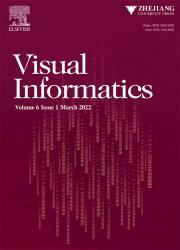RenderKernel:实时渲染系统的高级编程
IF 3.8
3区 计算机科学
Q2 COMPUTER SCIENCE, INFORMATION SYSTEMS
引用次数: 0
摘要
实时渲染应用利用异构计算来优化性能。然而,跨多种设备的软件开发面临着各种挑战,包括数据布局不一致、同步问题、资源管理复杂性和架构差异。此外,创建此类系统还需要冗长且不安全的编程模型。针对特定领域的统一着色语言的最新发展旨在缓解这些问题。在本文中,我们介绍了 RenderKernel,这是一种旨在简化实时渲染系统开发的编程模型。RenderKernel 认识到高层次方法的必要性,解决了实时渲染的特殊挑战,使异构系统的开发如同同构系统。这种模式可以在编译时及早发现和防止由于系统异构造成的错误。此外,RenderKernel 还能使用同构环境中的通用编程模式,将开发人员从底层异构系统的复杂性中解放出来。开发人员可以专注于编码独特的应用功能,从而提高生产率,减少与实时渲染系统开发相关的认知负荷。本文章由计算机程序翻译,如有差异,请以英文原文为准。
RenderKernel: High-level programming for real-time rendering systems
Real-time rendering applications leverage heterogeneous computing to optimize performance. However, software development across multiple devices presents challenges, including data layout inconsistencies, synchronization issues, resource management complexities, and architectural disparities. Additionally, the creation of such systems requires verbose and unsafe programming models. Recent developments in domain-specific and unified shading languages aim to mitigate these issues. Yet, current programming models primarily address data layout consistency, neglecting other persistent challenges.In this paper, we introduce RenderKernel, a programming model designed to simplify the development of real-time rendering systems. Recognizing the need for a high-level approach, RenderKernel addresses the specific challenges of real-time rendering, enabling development on heterogeneous systems as if they were homogeneous. This model allows for early detection and prevention of errors due to system heterogeneity at compile-time. Furthermore, RenderKernel enables the use of common programming patterns from homogeneous environments, freeing developers from the complexities of underlying heterogeneous systems. Developers can focus on coding unique application features, thereby enhancing productivity and reducing the cognitive load associated with real-time rendering system development.
求助全文
通过发布文献求助,成功后即可免费获取论文全文。
去求助
来源期刊

Visual Informatics
Computer Science-Computer Graphics and Computer-Aided Design
CiteScore
6.70
自引率
3.30%
发文量
33
审稿时长
79 days
 求助内容:
求助内容: 应助结果提醒方式:
应助结果提醒方式:


